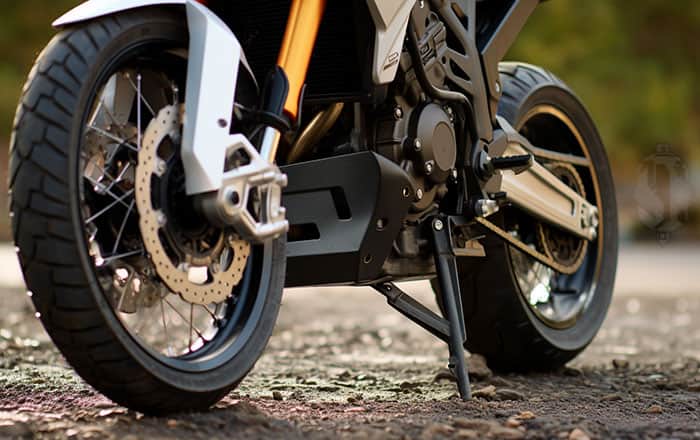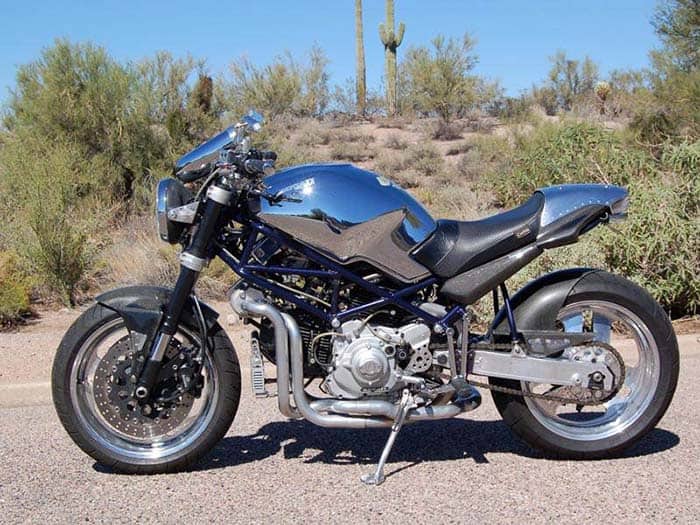How to Bypass the Kickstand Safety Switch on a Motorcycle?
Mastering Motorcycle Mechanics: How to Bypass the Kickstand Safety Switch

When it comes to motorcycle safety, certain features are designed to protect riders and prevent accidents. One such feature is the kickstand safety switch, which ensures that the motorcycle cannot be ridden while the kickstand is down. While this switch serves an important purpose, there may be situations where riders find it necessary to bypass the kickstand safety switch temporarily. In this article, we will explore the function of the kickstand safety switch, discuss when bypassing may be necessary, and provide guidance on how to do it safely.
Understanding the Kickstand Safety Switch

The kickstand safety switch is a simple yet effective device that prevents a motorcycle from being ridden while the kickstand is engaged. When the kickstand is down, it activates the switch, interrupting the electrical circuit and disabling the engine’s ignition system. The switch is usually located near the kickstand pivot point or attached to the kickstand itself. This safety feature is intended to prevent accidents caused by riding with the kickstand deployed, which can lead to loss of control or the kickstand striking the road surface during turns.
In addition to its primary function, the kickstand safety switch is interconnected with other components of the motorcycle’s electrical system. By disabling the ignition system, it also prevents starting the engine while the kickstand is down, ensuring rider safety.
Assessing the Need for Bypassing

While the kickstand safety switch serves an important purpose, there may be instances where riders find themselves needing to bypass it temporarily. Common situations include working on the motorcycle, such as during maintenance or repairs, or participating in activities that require the engine to run with the kickstand down, like testing or adjusting certain components.
It’s important to note that bypassing the kickstand safety switch should not be taken lightly. The switch is in place to protect riders and prevent accidents. However, understanding the circumstances in which bypassing may be necessary can help riders make informed decisions.
Before proceeding with any bypassing actions, it’s crucial to consider the potential risks and consequences involved. Bypassing the kickstand safety switch may compromise rider safety if the bike is ridden with the kickstand down inadvertently. Additionally, it’s important to ensure compliance with local laws and regulations regarding motorcycle modifications.
Precautions and Safety Measures
Prioritizing rider safety is paramount when considering bypassing the kickstand safety switch. Here are some precautions and alternative safety measures to keep in mind:
- Proper maintenance and inspection: Regularly inspect the kickstand mechanism, ensuring it is in good working condition. Lubricate moving parts to prevent sticking or failure. By keeping the kickstand in optimal shape, you reduce the need for bypassing the switch.
- Backup safety measures: Implement alternative safety measures to compensate for the bypass. For example, using a sturdy wheel chock or motorcycle stand can prevent the bike from tipping over when parked with the kickstand up. These measures provide an extra layer of protection.
- Rider responsibility: It is the rider’s responsibility to ensure that the kickstand is fully retracted before riding. Develop a habit of double-checking and visually confirming the kickstand’s position before engaging the engine.
Bypassing the Kickstand Safety Switch
If, after careful consideration and assessment, you find it necessary to bypass the kickstand safety switch, follow these steps:
- Gather the necessary tools: Before starting, ensure you have the appropriate tools for the job. You may need a set of wrenches, pliers, wire connectors, and electrical tape.
- Locate the kickstand safety switch: Depending on the motorcycle model, the switch is typically found near the kickstand pivot point or attached to the kickstand itself. Refer to the motorcycle’s service manual for precise location details.
- Disconnect the electrical connection: Using pliers or the appropriate tool, disconnect the electrical connection from the kickstand safety switch. This disconnection interrupts the electrical circuit responsible for disabling the ignition system.
- Insulate and secure the wires: To prevent accidental contact and short circuits, insulate the exposed wire ends using electrical tape or heat shrink tubing. Secure the wires in a manner that ensures they won’t interfere with other motorcycle components or moving parts.
- Test the bypass: With the electrical connection to the kickstand safety switch disconnected and properly insulated, attempt to start the motorcycle with the kickstand down. If the engine starts successfully, the bypass has been effective.
Troubleshooting and Common Issues
After bypassing the kickstand safety switch, it’s important to remain vigilant and watch for any potential issues that may arise. Here are some common problems and troubleshooting tips:
- Engine stalling: If the engine stalls when putting the bike into gear with the kickstand up, ensure that the clutch lever is pulled in fully. Some motorcycles have an additional safety feature that requires the clutch to be engaged before shifting into gear.
- Ignition system malfunction: If you experience issues with the ignition system after bypassing the switch, double-check all wire connections and ensure they are securely fastened. Loose or faulty connections can disrupt the electrical circuit and prevent proper engine operation.
- Warning lights: In some cases, bypassing the kickstand safety switch may trigger warning lights on the motorcycle’s instrument cluster. Consult the motorcycle’s service manual or contact a professional technician to diagnose and address the issue.
Legal and Ethical Considerations
It’s essential to understand the legal and ethical implications of bypassing the kickstand safety switch. While the specifics may vary depending on your location, modifying or bypassing safety features mandated by regulations can have legal consequences. Always consult local laws and regulations to ensure compliance and ride responsibly.
Furthermore, it’s important to consider the ethical aspects of bypassing safety mechanisms. Motorcycle manufacturers design their bikes with rider safety in mind. Altering or bypassing safety features can introduce unnecessary risks. It’s crucial to exercise caution and make informed decisions that prioritize safety.
Conclusion
The kickstand safety switch plays a vital role in ensuring rider safety by preventing accidents caused by riding with the kickstand deployed. While bypassing the switch should be approached with caution, there are circumstances where it may be necessary. By understanding the function of the kickstand safety switch, assessing the need for bypassing, taking necessary precautions, and adhering to legal and ethical considerations, riders can make informed decisions that prioritize safety.
Remember, bypassing the kickstand safety switch should be done responsibly and with a thorough understanding of the potential risks involved. When in doubt, consult professional technicians or motorcycle experts to ensure proper modifications and maintain the highest level of safety on your rides.
Here is another article on - How to Bypass Neutral Safety Switch on a Motorcycle?
Join Our Riding Community
Get exclusive gear reviews, riding tips, and early access to deals delivered to your inbox.
No spam. Unsubscribe anytime. We respect your privacy.